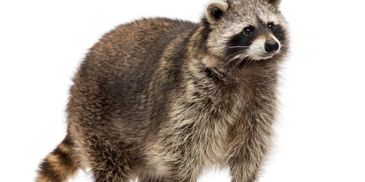About Us

Raccoons
Raccoons
Raccoons
There are 3 common raccoon diseases that are of concern to people and their pets
Distemper: Humans do not get distemper, but dogs can.
Rabies: Rabies is a disease that humans can get.
Raccoon Roundworm:
Raccoon roundworm is a parasite that does not cause disease in raccoons, but is a devastating and even fatal disease when transferred to humans.

Opossums
Raccoons
Raccoons
Opossums can carry a number of infectious diseases: leptospirosis, tuberculosis, relapsing fever, tularemia, spotted fever, toxoplasmosis, coccidiosis, and Chagas disease.

Skunk
Raccoons
Squirrels
Maine has only one variety of skunk — the striped skunk and it's a crucial predator in the landscape. Skunks are known carriers of rabies.

Squirrels
Squirrels
Squirrels
Red Squirrels: Red squirrels are the most likely culprit inside homes, where they use insulation for nest building and sometimes chew electrical wiring.
Gray Squirrels: Gray squirrels raid fruit and nut trees, and vegetable and flower gardens, where they eat both flower bulbs and buds.

Bats
Squirrels
Pigeons
There are two types of bats that commonly roost inside of homes, the little brown bat and the big brown bat.
Little Brown Bat: body length of about 2-4 inches and a wingspan of approximately 8-11 inches.
Big Brown Bat: their bodies are about 4-5 inches in length and they have a wingspan of 12-16 inches.
Bats defecate before entering buildin
There are two types of bats that commonly roost inside of homes, the little brown bat and the big brown bat.
Little Brown Bat: body length of about 2-4 inches and a wingspan of approximately 8-11 inches.
Big Brown Bat: their bodies are about 4-5 inches in length and they have a wingspan of 12-16 inches.
Bats defecate before entering buildings and places where they roost. In buildings where there is an attic roost or a roost in a wall, an accumulation of droppings may fall through cracks and stain ceilings and walls.
Diseases: Histoplasma, a fungus that lives where there's a large amount of bird or bat poop. The infection ranges from mild to life-threatening. It can be misdiagnosed because its symptoms are similar to those of other illnesses, like pneumonia caused by bacteria.

Pigeons
Squirrels
Pigeons
Pigeons typically have a gray body with a whitish rump and red feet. The average weight is 13 ounces and average length is less than 12”.
The pigeon can roost or nest on any man-made structure that provides shelter from environmental conditions. This advantageous adaptation has made pigeons a nuisance to humans.
Damage: Pigeon droppings c
Pigeons typically have a gray body with a whitish rump and red feet. The average weight is 13 ounces and average length is less than 12”.
The pigeon can roost or nest on any man-made structure that provides shelter from environmental conditions. This advantageous adaptation has made pigeons a nuisance to humans.
Damage: Pigeon droppings cause excessive damage to property, buildings, automobiles, and machinery. ` Diseases: Pigeon droppings harbor dangerous fungi and airborne spores, which, if disturbed and inhaled, can cause serious illness.
They can host numerous ectoparasites as well, such as ticks, flies, fleas, mites and biting lice. These ectoparasites infest buildings and can bite humans and pets.
Copyright © 2024 IPM Pest & Wildlife Services - All Rights Reserved.
Powered by GoDaddy Website Builder
This website uses cookies.
We use cookies to analyze website traffic and optimize your website experience. By accepting our use of cookies, your data will be aggregated with all other user data.
